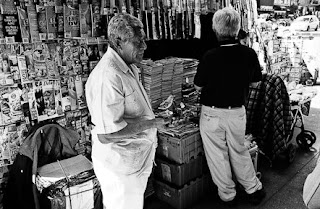




The origin of the Feast of the Giglio dates back to 409AD, when San Paolino di Nola (St. Paulinus of Nola, Italy), the town's Bishop made a great and noble sacrifice.
San Paolino was born in Bordeaux, France in 355AD the son of a rich Roman who had property in France and Italy. He became a distinguished lawyer, holding several public offices in the Roman Empire. He married and retired at an early age to a life of cultured leisure. After many childless years, Paolino and his wife Theresa had a son but he died one week after birth. This occasioned the beginning of a life of great austerity and charity, where he gave away most of his property and earthly goods. He was ordained a priest shortly after and moved to Nola, Italy to fulfill his religious obligations.
As the story goes, during the waning years of the Roman Empire in 409AD, Southern Italy was over run by North African conquers, known as the Huns. San Paolino was able to escape the rage and rampage with may of the children of the town. The men of the town where captured, indentured as slaves and brought back to North Africa.
Upon San Paolino return to the town with the children, he was greeted by a widow who's only son was taken captive. She pleaded for his involvement to get her son freed. San Paolino vowed to go to North Africa and barter for the freedom of the widow's son. When the leader of the Huns refused, San Paolino sacrificed his freedom for the freedom of the Widow's only son. The leader of the Hun's accepted.
During his captivity, San Paolino gained the respect and trust of the Hun's leader and was made his personal slave. Legend recalls that San Paolino had a special gift to predict the future and on one such occasion he was able to warn the leader of the Hun's of impending danger. For saving the leaders life, he granted San Paolino his freedom. Paolino only would accept if all the men of Nola were also freed. Eventually the leader agreed and San Paolino along with the men of town returned back to Nola on the boat of a Turkish sultan who provided the passage free after hearing of the great sacrifice made by Paolino.
Upon his return, two years after being enslaved, the overjoyed and grateful townspeople meet Paolino at the shore carrying gigli, Italian for lilies. Shortly after his death, people from the town of Nola, started to carry bouquets of lillies to the church's alter in the center of town. Gradually the faithful started to mount their lilies on poles in decorative arrangements and marched them to the center of Nola each year on San Paolino feast date, June 22. Eventually a base was created to support these structures of lilies and a statue of San Paolino was placed on top.
During the Middle Ages, a real competition started to emerge amongst various guilds such as the bakers, shoemakers, butchers, farmers, tailors and vintners. Then during the Renaissance years, artists and artisans began designing tall spire's made of papier-mache and wood. Starting sometime during the 17th century, festive music was incorporated into the celebration and the Giglio truly began to dance.
Today, some 1,600 years later this enduring story of sacrifice and honor is larger then ever. The Giglio festivals in Nola, Brooklyn, Harlem and Long Island continue to gain momentum in an awe-inspiring commemoration of all ages.
From The Giglio Feasts – USA Feast Origin and History







